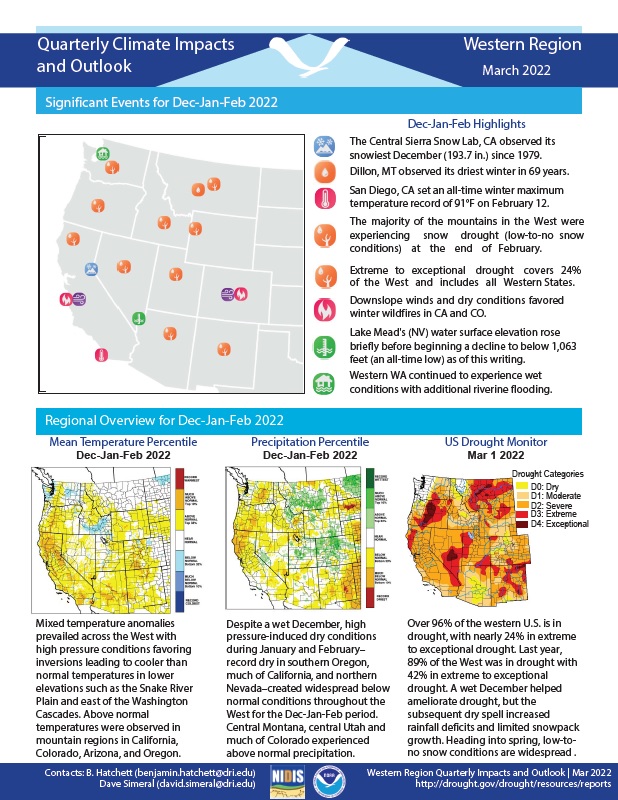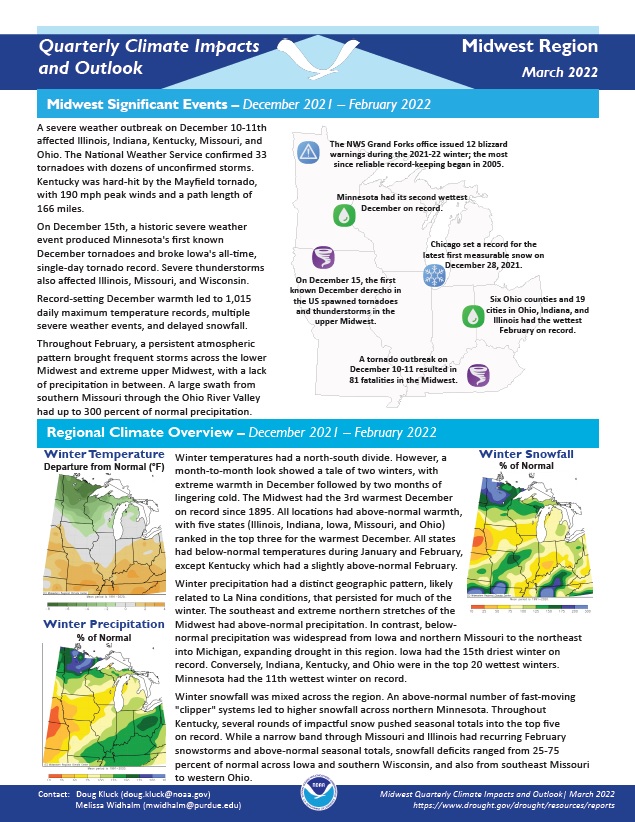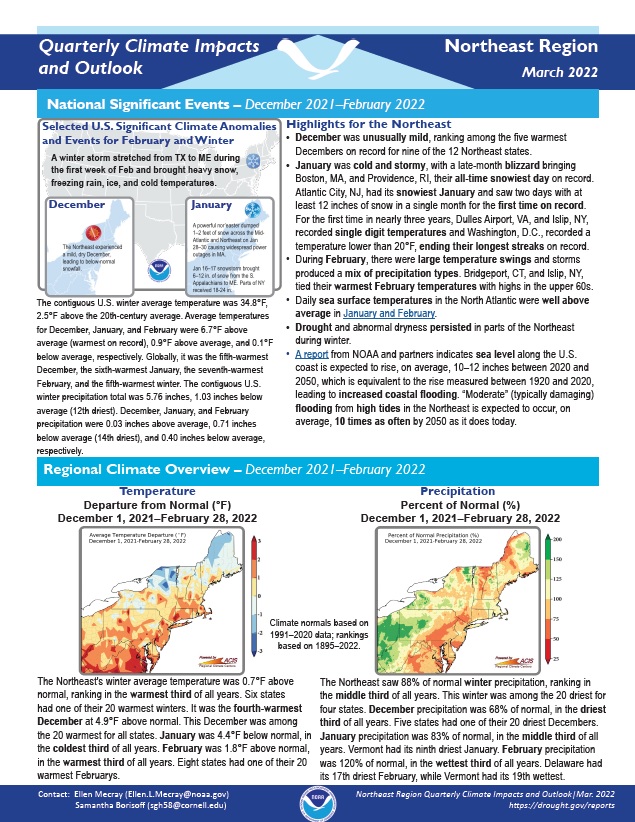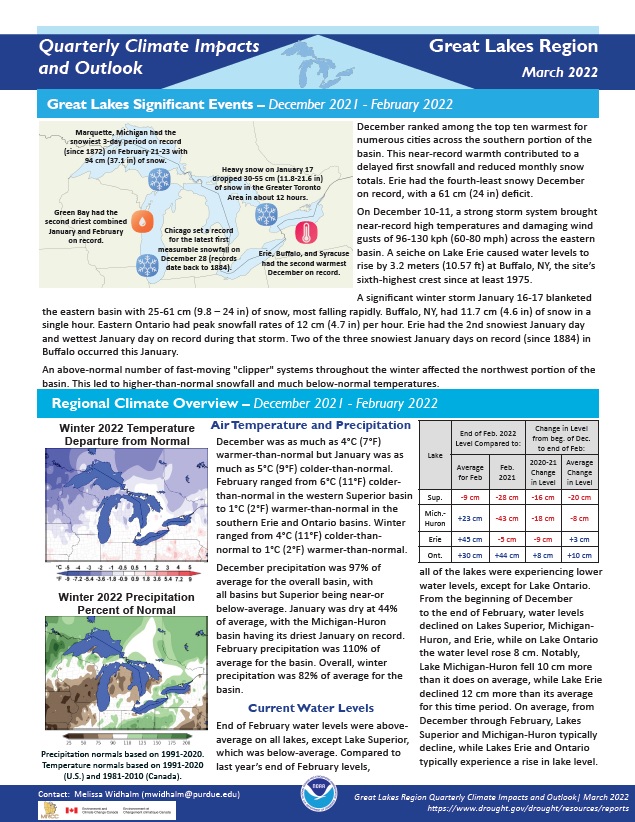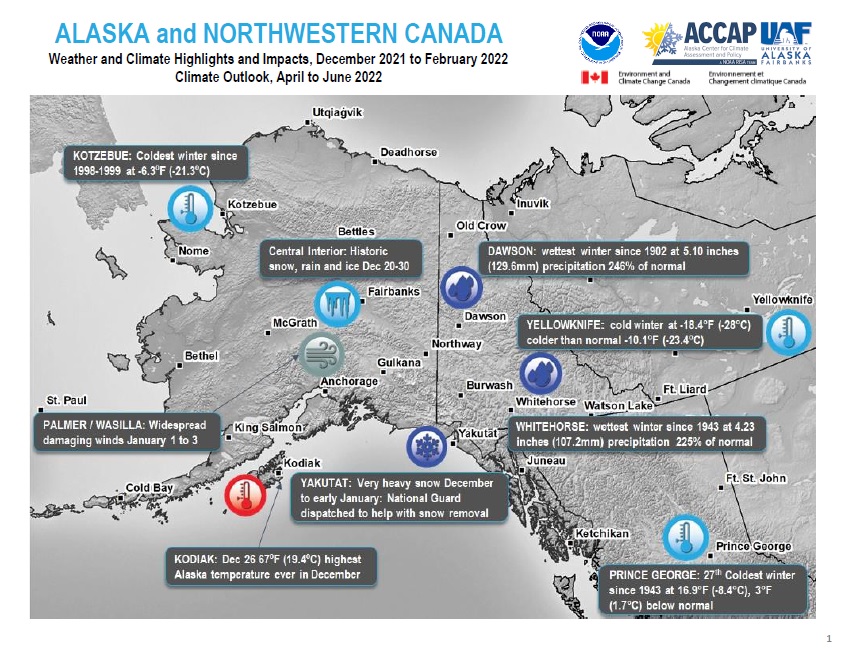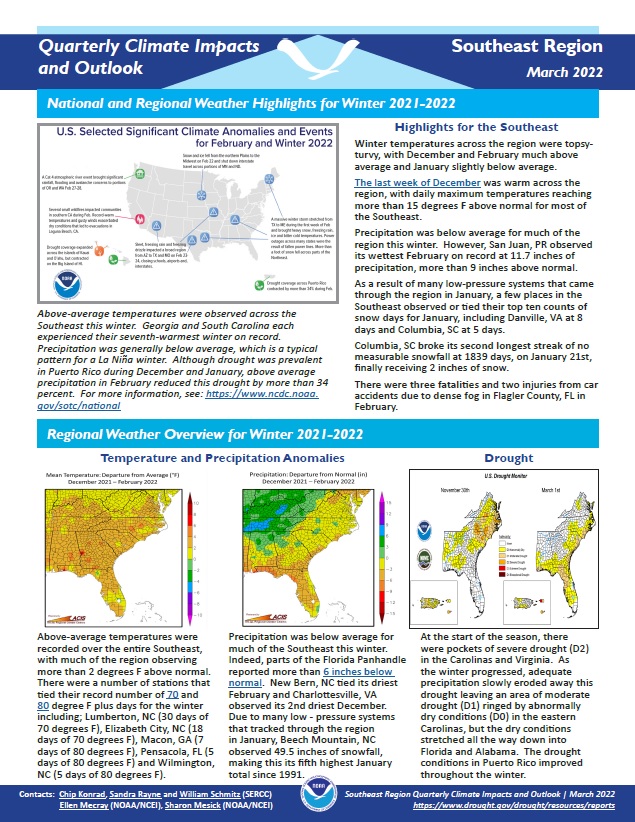This study, published in WIREs Water, volume 9, issue 3, was funded by NIDIS through the FY 2022 Coping with Drought research competition.
Learn more about this research: Developing Drought Impact Models for the Intermountain West Drought Early Warning System.
Quarterly Climate Impacts and Outlook for the Southern Region for December 2021–February 2022. Dated March 2022.
Winter 2021–2022 temperatures were near normal across western Oklahoma and western and southern Texas. In the rest of the Southern Region, average winter temperatures ran about 2°F to 4°F above normal. The northern half of Arkansas, all of Tennessee, parts of northern Mississippi, and isolated portions of Texas experienced above-normal precipitation during winter 2021–2022. Elsewhere, it was quite dry.
Quarterly Climate Impacts and Outlook for the Western Region for December 2021–February 2022. Dated March 2022.
Above-normal temperatures were observed in mountain regions in California, Colorado, Arizona, and Oregon. Despite a wet December, high pressure-induced dry conditions during January and February created widespread below-normal conditions throughout the West.
Quarterly Climate Impacts and Outlook for the Midwest Region for December 2021 - February 2022. Dated March 2022.
Quarterly Climate Impacts and Outlook for the Northeast Region for December 2021 - February 2022. Dated March 2022.
The Northeast's winter average temperature was 0.7°F above normal, ranking in the warmest third of all years. Six states had one of their 20 warmest winters. The Northeast saw 88% of normal winter precipitation, ranking in the middle third of all years. This winter was among the 20 driest for four states.
Quarterly Climate Impacts and Outlook for the Missouri River Basin for December 2021–February 2022. Dated March 2022.
Winter temperatures were above normal for the majority of the Missouri River Basin. Precipitation was mostly below normal in the mountains and plains. The exception was eastern North Dakota with well-above-normal precipitation and snowfall. Many counties in northern Kansas and Nebraska ranked among their driest winters on record.
Quarterly Climate Impacts and Outlook for the Great Lakes Region for December 2021 - February 2022. Dated March 2022.
Winter temperatures ranged from 4°C (11°F) colder-than-normal to 1°C (2°F) warmer-than-normal. Overall, winter precipitation was 82% of average for the basin.
Quarterly Climate Impacts and Outlook for the Gulf of Maine Region for December 2021 - February 2022. Dated March 2022.
Winter ranged from 1°C (2°F) below normal in parts of Maine to 3°C (5°F) above normal in Cape Breton, N.S. Warm winter temperatures are a concern for Nova Scotia's Christmas tree industry. Winter precipitation ranged from 75% of normal to 175% of normal.
Quarterly Climate Impacts and Outlook for Alaska and Northwestern Canada for December 2021 - February 2022, with an outlook for April - June 2022. Dated March 2022.
From December 2021 to February 2022, most of Alaska, Yukon, Northwest Territories and northern British Columbia received record to near record precipitation. Winter temperatures have been mostly below normal.
Quarterly Climate Impacts and Outlook for the Southeast Region for December 2021 - February 2022. Dated March 2022.
Winter temperatures across the region were topsy-turvy, with December and February much above average and January slightly below average. Precipitation was below average for much of the region this winter. However, San Juan, PR observed its wettest February on record at 11.7 inches of precipitation, more than 9 inches above normal.




